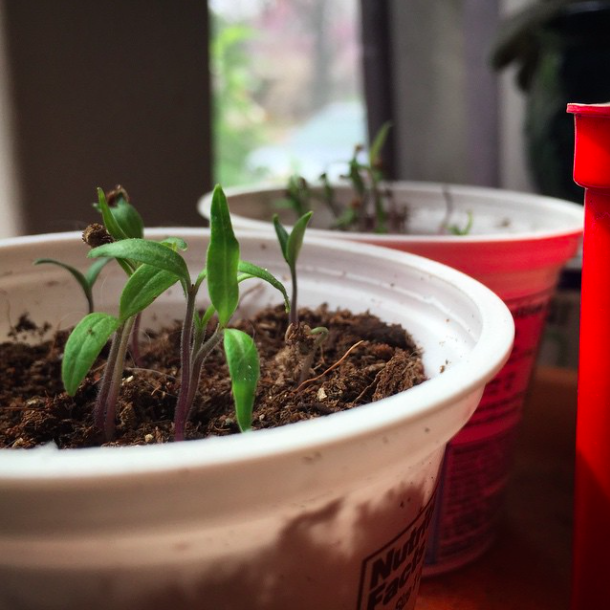Gardening on a Dime
Posted on April 17, 2015Between the bougie plant names (e.g.: Madame Emile Debatene, Little Miss Daisy, Abraham Darby) and a seemingly never-ending list of “necessary” tools, gardening can feel like a rich man’s hobby reserved only for those with the money to “do it right”. It doesn’t help that books such as The $64 Tomato are contending that it costs upwards of $16,000 dollars to get a garden going! That’s bewildering—16k is over half of my family’s yearly income, and we aren’t spending anywhere close to that on our garden.
Here’s the truth: gardening can be dirt cheap. Sure, at first the raised beds and heirloom seeds are going to set you back a bit, but in the long-run, gardening is affordable and accessible. Anybody can garden on a dime, you just have to garden smart.
Compost! Compost is proof that gardening is cheaper, easier, and more accessible than the proverbial “they” would like you to think. Anybody can compost. You don’t need a fancy tumbler or exotic, European worms, you just need trash and time. If you eat fruits and veggies, do your laundry in a machine, brew coffee, or mow your lawn, then you have what it takes! You don’t even need yard space. And you can compost more than you’d probably expect: here’s a great list of 65 common household items that can go in the heap.
Resourceful Repurposing I’ve started my seeds in well-cleaned yogurt cups, cardboard boxes and old take-out containers. I’ve used mason jars and teacups as make-shift planters. I turned an empty laundry detergent container into a watering can and a screen printing light from my art school days into an indoor growing system. My raised beds are partially built from stones we found on site, while my compost bin is a hand-me-down. Before purchasing new equipment, think of ways you can repurpose something you already own.

Little baby nightshades getting their grow on in a couple of coconut yogurt cups.
Shop Secondhand If you do end up having to purchase equipment, then shop around for secondhand steals. You’d be surprised as to what all you can find at the thrift store: pots, shovels, spades, and more! Mine the farm+garden section of your local Craigslist, and don’t be afraid to haggle. Tom and I were able to get our electric lawnmower off of Craiglist for next to nothin’. You might even score something for free!
Go Beyond the Garden Store If all else fails and you must purchase new, go beyond the typical hardware and garden stores. Search around your local co-ops, discount stores, farmstands, and bulk warehouses. Every spring, my local dollar store stocks jersey gardening gloves, sturdy trowels and spades, pruning shears, and terra cotta pots… and they all only cost a buck! I’ve gotten inexpensive, hardy houseplants from the grocery store florist and I’ve propagated potatoes and green onions from the produce aisle. My favorite vegetable transplants come from the farmer’s market. And don’t count out shopping online—I get almost all of my seeds from the Baker Creek online store.
Spend More on What Matters While you can buy packets of seeds for pennies on the dollar, these seeds will often be treated with chemicals. The organic, heirloom seeds are pricer (around $2.50 a packet), but they are well-worth it. Buy your seeds from trusted sources, the aforementioned Baker Creek is fantastic. Think of your seeds as an investment: if you save your seeds at the season’s end, then you won’t have to purchase them again.
The same goes with choosing to build a raised bed. While it costs a bit more to build one with sturdy, hardwood materials, the bed will last for years. (And if you live on land with rocky soil, or in a place where the ground might be leeching chemicals, building a raised bed could be the only way to go.) Filling it with a high-quality soil blend will cost a chunk of change (each of our beds cost around $80 to fill), but after your first year of gardening, you’ll only need to turn the soil and add compost. Like I said, it’s an investment. Tom and I lucked out by having gift cards that covered almost all of the cost of building a raised bed… there are even websites like YouGov where you can take surveys in exchange for free gift cards!
All in all, gardening is cheap and accessible. It allows anyone, anywhere a hand in the production of their food. Gardening, in that way, is a revolutionary act. It is an option for all, regardless of situation or status, and it need not cost $16,000, or even $160.

